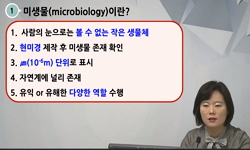In this study multi-zone modeling program CONTAM 2.4 developed by NIST is used for estimating the air disinfection rate of the interior of a room which is set up the indoor air disinfection system with filter and ultra violet germicidal irradiation(UV...
http://chineseinput.net/에서 pinyin(병음)방식으로 중국어를 변환할 수 있습니다.
변환된 중국어를 복사하여 사용하시면 됩니다.
- 中文 을 입력하시려면 zhongwen을 입력하시고 space를누르시면됩니다.
- 北京 을 입력하시려면 beijing을 입력하시고 space를 누르시면 됩니다.

실내 미생물오염 전파방지를 위한 멀티존 모델링에 관한 연구 = A Study on the Multizone Modeling for Preventing Transmission of Air Borne Contagion
한글로보기https://www.riss.kr/link?id=A104422768
- 저자
- 발행기관
- 학술지명
- 권호사항
-
발행연도
2006
-
작성언어
-
- 주제어
-
등재정보
KCI등재
-
자료형태
학술저널
- 발행기관 URL
-
수록면
933-940(8쪽)
-
KCI 피인용횟수
9
- 제공처
-
0
상세조회 -
0
다운로드
부가정보
다국어 초록 (Multilingual Abstract)
In this study multi-zone modeling program CONTAM 2.4 developed by NIST is used for estimating the air disinfection rate of the interior of a room which is set up the indoor air disinfection system with filter and ultra violet germicidal irradiation(UVGI). Developed models those enable to predict the transmission of air borne contagion such as bacteria and fungus generated in our daily life are useful model for designning air cleaning & ventilation system of building. Also, results indicate that these models are enable to compute the real situation that is almost impossible of carrying out experiment in an actual condition due to biohazard problems and suggest that engineers will use these models as a design tool for the future immune building system.
참고문헌 (Reference)
1 "Validation of three multizone airflow models" Concordia University 2002
2 "The study on the performance estimation of UVC air sterilizer for preventing transmission of air borne contagion" 17 (17): 581-587, 2005
3 "Method of testing general ventilation air" 52 (52): 1999
4 "Mathematical modeling of UVGI for air disinfection" 2 (2): 249-270, 3
5 "Mathematical modeling of UVGI for air disinfection" 2 (2): 249-270, 2000
6 "Engineering solutions to indoor air problems IAQ88/Engineer Solutions to Indoor Air Problems Atlanta." 1988
7 "CONTAM 2.4 User Guide and Program Documentation" 7251 : -7251, 2005
8 "Assessing multizone airflow simulation software" 267-271, 2002
9 "A tool for modeling airflow & contaminant transport" 35-42, 2001March
1 "Validation of three multizone airflow models" Concordia University 2002
2 "The study on the performance estimation of UVC air sterilizer for preventing transmission of air borne contagion" 17 (17): 581-587, 2005
3 "Method of testing general ventilation air" 52 (52): 1999
4 "Mathematical modeling of UVGI for air disinfection" 2 (2): 249-270, 3
5 "Mathematical modeling of UVGI for air disinfection" 2 (2): 249-270, 2000
6 "Engineering solutions to indoor air problems IAQ88/Engineer Solutions to Indoor Air Problems Atlanta." 1988
7 "CONTAM 2.4 User Guide and Program Documentation" 7251 : -7251, 2005
8 "Assessing multizone airflow simulation software" 267-271, 2002
9 "A tool for modeling airflow & contaminant transport" 35-42, 2001March
동일학술지(권/호) 다른 논문
-
R22를 적용한 전자팽창밸브의냉매유량 특성 및 유량예측 모델링
- 대한설비공학회
- 박차식
- 2006
- KCI등재
-
슬래브축열의 최적제어방책에 관한 연구 -평가함수의 선택이 결과에 미치는 영향-
- 대한설비공학회
- 정재훈
- 2006
- KCI등재
-
프레온 냉동장치의 과열도에 관한 성능 특성 연구 -열교환기 타입별 비교-
- 대한설비공학회
- 홍석주
- 2006
- KCI등재
-
- 대한설비공학회
- 최광일
- 2006
- KCI등재
분석정보
인용정보 인용지수 설명보기
학술지 이력
| 연월일 | 이력구분 | 이력상세 | 등재구분 |
|---|---|---|---|
| 2022 | 평가예정 | 계속평가 신청대상 (등재유지) | |
| 2017-01-01 | 평가 | 우수등재학술지 선정 (계속평가) | |
| 2013-01-01 | 평가 | 등재 1차 FAIL (등재유지) |  |
| 2010-01-01 | 평가 | 등재학술지 유지 (등재유지) |  |
| 2008-01-01 | 평가 | 등재학술지 유지 (등재유지) |  |
| 2006-01-01 | 평가 | 등재학술지 유지 (등재유지) |  |
| 2004-01-01 | 평가 | 등재학술지 유지 (등재유지) |  |
| 2001-07-01 | 평가 | 등재학술지 선정 (등재후보2차) |  |
| 1999-01-01 | 평가 | 등재후보학술지 선정 (신규평가) |  |
학술지 인용정보
| 기준연도 | WOS-KCI 통합IF(2년) | KCIF(2년) | KCIF(3년) |
|---|---|---|---|
| 2016 | 0.8 | 0.8 | 0.62 |
| KCIF(4년) | KCIF(5년) | 중심성지수(3년) | 즉시성지수 |
| 0.51 | 0.44 | 0.622 | 0.03 |




 ScienceON
ScienceON




